A Very Rare Ottoman ‘Shaffron’ or ‘Chamfron’
A Very Rare Ottoman ‘Shaffron’ or ‘Chamfron’
Formed from a single piece of steel, boxed over each side of the muzzle, flanged around the eyes and ears, and widening across the forehead, the latter embossed with a pair of broad curved flutes, the lower ones extending along most of the length of the muzzle, the forehead incised with a shaped cartouche of quatrefoil form enclosing foliage and a panel inscribed ‘The Sultan’ against a ground of arabesques
Steel
Turkey or Anatolia
Early 16th Century
Size: 53cm long, 20cm wide (max) 6cm deep - 21 ins long, 8 ins wide (max) 2¼ ins deep
Formed from a single piece of steel, boxed over each side of the muzzle, flanged around the eyes and ears, and widening across the forehead, the latter embossed with a pair of broad curved flutes, the lower ones extending along most of the length of the muzzle, the forehead incised with a shaped cartouche of quatrefoil form enclosing foliage and a panel inscribed ‘The Sultan’ against a ground of arabesques
Steel
Turkey or Anatolia
Early 16th Century
Size: 53cm long, 20cm wide (max) 6cm deep - 21 ins long, 8 ins wide (max) 2¼ ins deep
A Very Rare Ottoman ‘Shaffron’ or ‘Chamfron’
Formed from a single piece of steel, boxed over each side of the muzzle, flanged around the eyes and ears, and widening across the forehead, the latter embossed with a pair of broad curved flutes, the lower ones extending along most of the length of the muzzle, the forehead incised with a shaped cartouche of quatrefoil form enclosing foliage and a panel inscribed ‘The Sultan’ against a ground of arabesques
Steel
Turkey or Anatolia
Early 16th Century
Size: 53cm long, 20cm wide (max) 6cm deep - 21 ins long, 8 ins wide (max) 2¼ ins deep
Formed from a single piece of steel, boxed over each side of the muzzle, flanged around the eyes and ears, and widening across the forehead, the latter embossed with a pair of broad curved flutes, the lower ones extending along most of the length of the muzzle, the forehead incised with a shaped cartouche of quatrefoil form enclosing foliage and a panel inscribed ‘The Sultan’ against a ground of arabesques
Steel
Turkey or Anatolia
Early 16th Century
Size: 53cm long, 20cm wide (max) 6cm deep - 21 ins long, 8 ins wide (max) 2¼ ins deep
See:
For other related examples in the Furusiyya Art Foundation Collection see: Mohamed, B; ‘The Arts of the Muslim Knight’, 2007, pp. 340 - 341, no. 326 - 327 (illustrated); and in the ‘Nasser D. Khalili Collection of Islamic Art’ series, David Alexander, ‘The Arts of War’, vol. XXI, 1992, pp. 88 - 89 and 93 - 94, no. 41, 44 and 45 (illustrated); and for a Shaffron of very similar form formerly in the Collection of George Cameron Stone and now in the Metropolitan Museum of Art (inv. no. 36. 25. 510) see David Alexander, ‘Islamic Arms and Armor in the Metropolitan Museum of Art’, 2015, pp. 128 - 129, no. 47 (illustrated)
note:
The Imperial Arsenal was the main base and naval shipyard of the Ottoman Empire from the 16th century to the end of the empire. It was located on the Golden Horn, in the Ottoman capital, Constantinople (modern day Istanbul).
‘Shaffron’ or ‘Chamfron’ of this type were used in the area covering Aq-Qoyunlu, Iran and the Ottoman Empire. The muzzle on our example is incised with three further lobed cartouches each incised with a symmetrical design of interlaced arabesques and palmettes against a finely punched ground, and with a half cartouche at the base, the edges bordered by small holes for an inner lining and probably also for ‘fringed’ mail or cheek and neck defences.
During the late fourteenth and fifteenth centuries the development of armour designed for horses in ‘tournaments’ witnessed the distinctive type of ‘shaffron’ we know today, although originally made of leather. Horse armour continued to enjoy high demand, with full bards remaining common until around 1550, as long as the heavy cavalry was still armed with the traditional lance.
Another vogue that appeared during this time, inspired by the continuous contact, either hostile or otherwise, between Europe and the Ottoman Empire, was a taste for all things deemed ‘oriental’. That ‘fashion’ influenced court life, evident by the luxurious ‘Turkish tournaments’ which were held in the Habsburg court. Participants were dressed in the ‘Ottoman’ style including turbans, pointed helmets, long kaftans and carrying Turkish sabres and shields. Some of those arms and armour had previously been acquired as ‘gifts’, trade items or ‘war booty’ from the Turks.
Stamped with the so-called Turkish ‘Ottoman’ Arsenal mark, indicating that the ‘Shaffron’ was captured by Ottoman forces, and subsequently stored in the Turkish arsenal in Constantinople (Istanbul)
Ex Noble Austrian Private collection
Sold Hermann Historica, Munich, 16th October 2012, lot 857
Ex Private collection
A Very Rare Ottoman ‘Shaffron’ or ‘Chamfron’
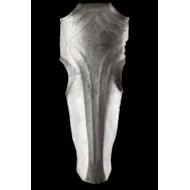
SOLD
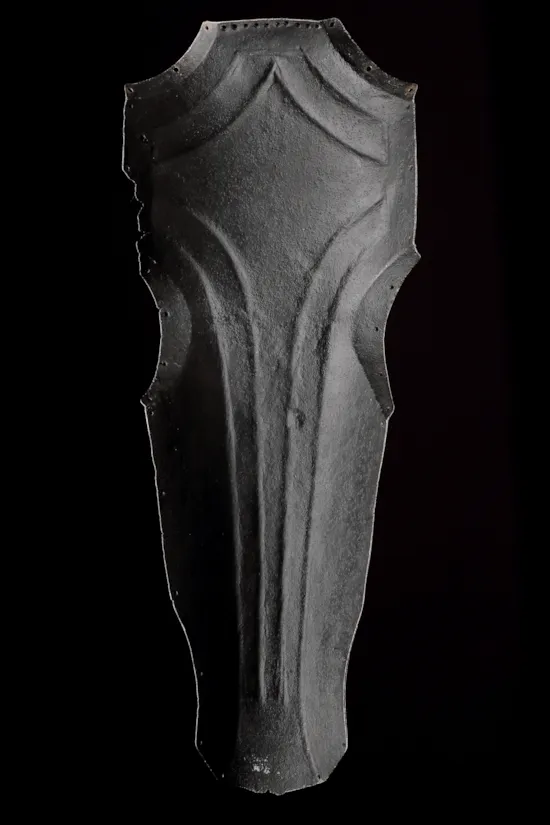
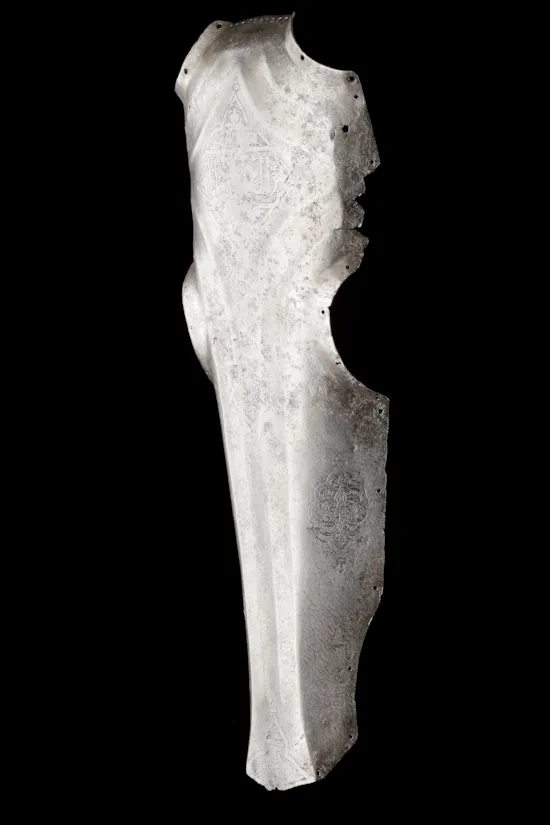
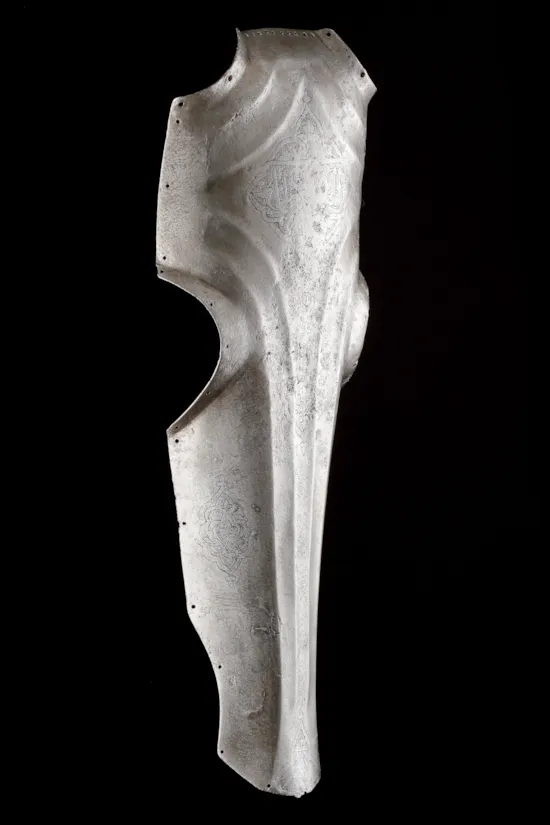
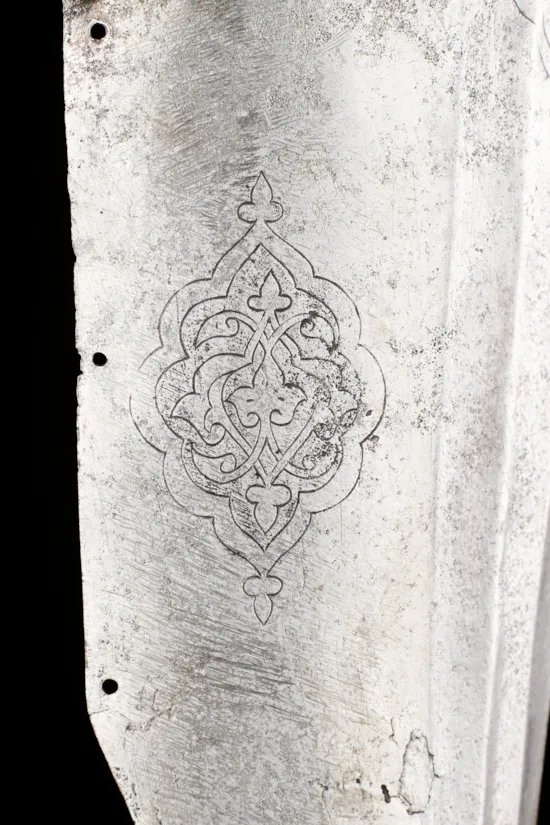
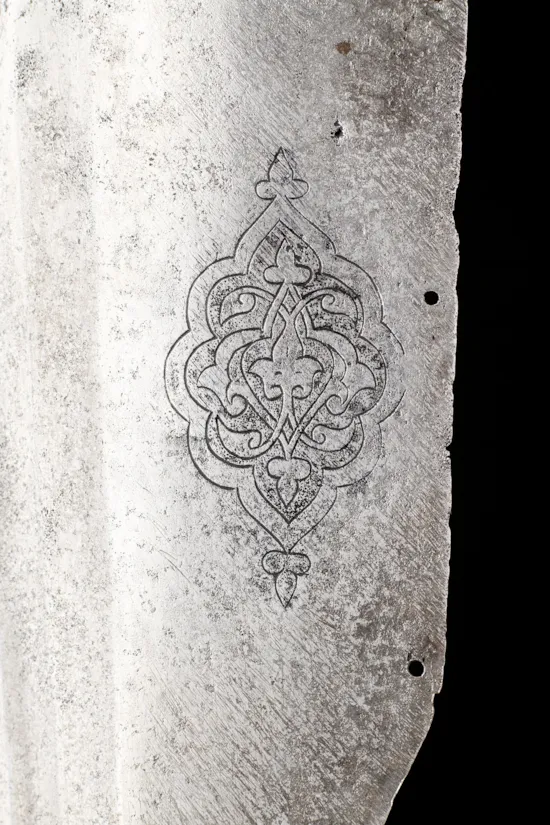
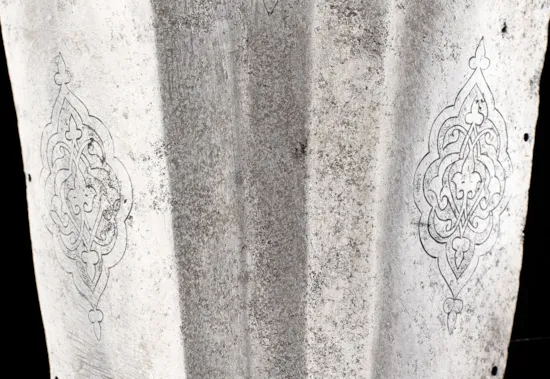
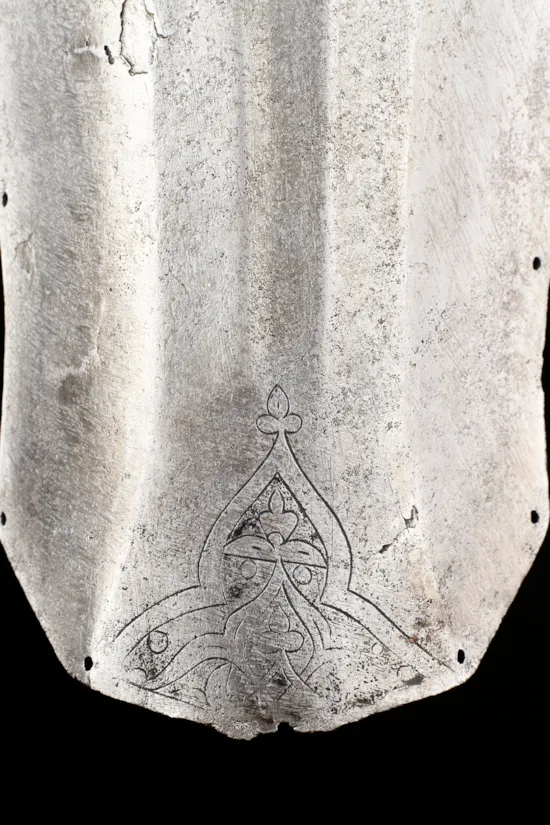
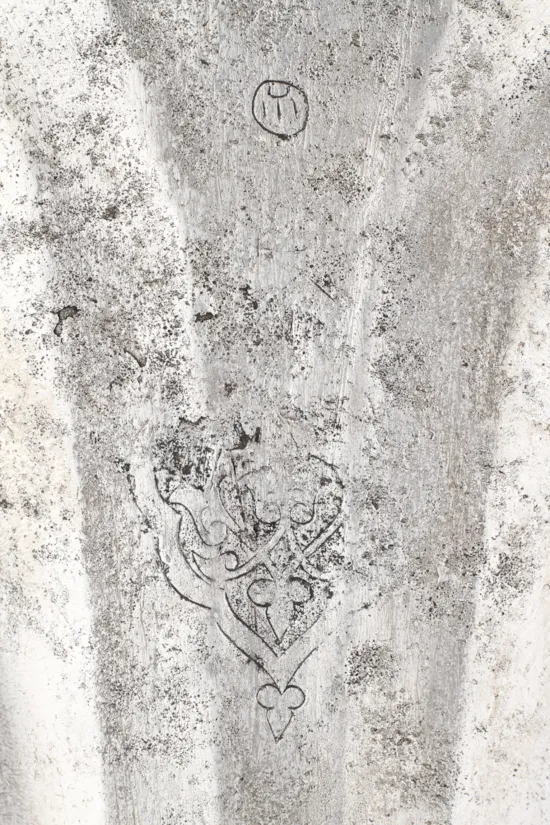
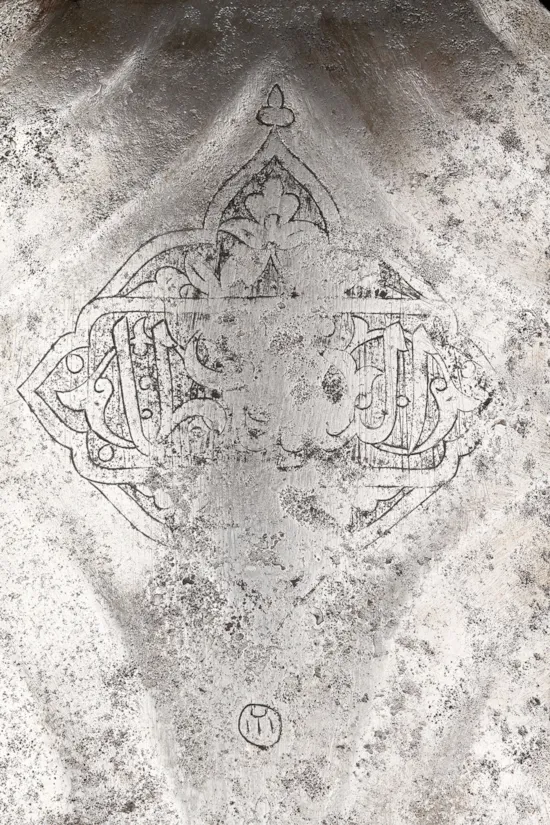









YOU MAY ALSO LIKE

